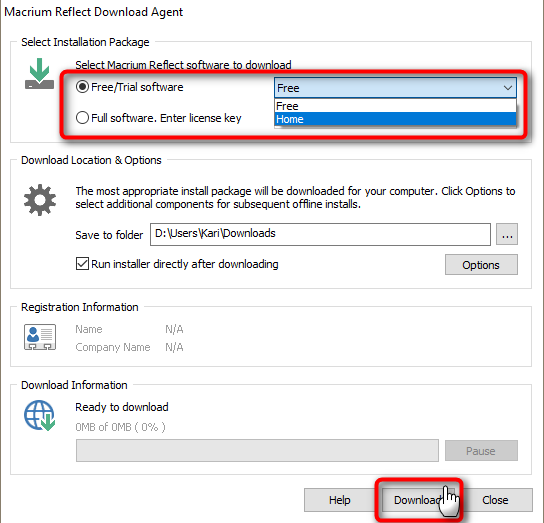

There are various suggestions out there that involve manually adding drivers to the rescue media (either putting them in the c:\boot\macrium\drivers folder or copying them directly to a USB rescue media). On that machine, if I build the rescue media using all the default settings (as I normally do), when I boot into the rescue environment the only display option I have is 640 x 480, which means the Macrium screen that lets me choose which partitions to image (or restore) is "too big" for my display - meaning I can't set the proper selections and run the process. All are Win 10, all work fine with Macrium's rescue media except one laptop - a Toshiba S55-C5138. I use Macrium Free on a number of machines. Start Reflect, take the ‘Other Tasks’ menu option and select ‘Create a bootable Rescue CD’ The wizard opens and In the wizard window, select ‘ Windows PE 2.0' and click ‘Next’.Just as a data point for anyone reading this forum trying to solve the same problem.

You can add missing drivers to the Windows PE build to enable access to RAID volumes and include drivers for unrecognised network interface cards (NIC). This is licensed from Microsoft and has greater flexibility than the other rescue environments. The only way you can freely access every part of your system partition is to start your PC with another operating system that loads entirely into RAM.Įnter Windows PE.

You can't simply replace them with a different version because they may be loaded into memory and inaccessible from the disk. Many of the thousands of files in your Windows system directory are open and running to keep your PC humming along. Windows uses both the RAM (main memory) and the hard disk during normal operation. The simple answer is because Windows won't let you access all the files on your hard disk. The first time you attempt to burn this CD the installer will be automatically downloaded. The Windows PE rescue CD is only included with the purchased version of Macrium Reflect and is a separate download. In this tutorial I'll take you through the steps required to build a Macrium Reflect Windows PE rescue CD.


 0 kommentar(er)
0 kommentar(er)
